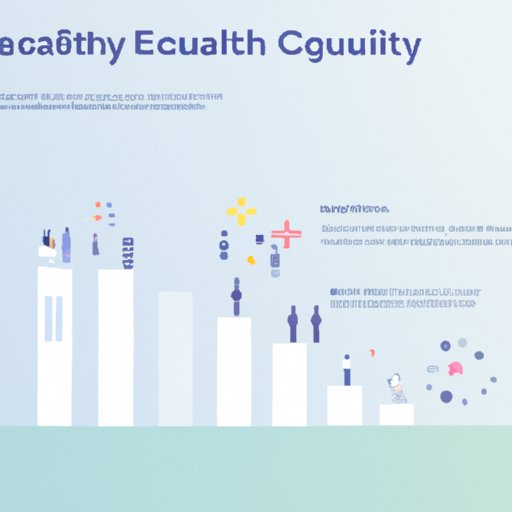Introduction
Health equity is defined as the attainment of optimal health for all people, regardless of their race, ethnicity, gender, sexual orientation, religion, or socioeconomic status. It is a concept that recognizes the systemic barriers to health care access and outcomes faced by underserved populations, and works to ensure that everyone has an equal opportunity to attain the highest level of health possible. Unfortunately, many individuals and communities in the United States do not have access to quality health care, which can lead to poorer health outcomes.
Examining Health Equity in the United States – An Overview
The United States faces significant disparities in health care access and outcomes. According to the Institute of Medicine, “Racial and ethnic minorities and low-income persons experience greater morbidity and mortality from chronic diseases than other segments of the population.” These disparities are caused by a variety of factors, including unequal access to quality healthcare, the cost of care, and the availability of resources. Additionally, social factors such as racism, discrimination, and poverty can also contribute to health inequities.
Exploring the Causes of Inequality in Healthcare
Access to quality care is one of the most significant factors contributing to health equity. According to the American Public Health Association, “low-income individuals, racial and ethnic minorities, and other vulnerable populations often lack access to health services and face higher rates of illness and death than the general population.” Additionally, these populations are more likely to have limited access to preventive care, which can result in an increased risk of chronic conditions such as diabetes, heart disease, and HIV/AIDS.
The cost of care is another major factor impacting health equity. According to a 2017 report from the Kaiser Family Foundation, “nearly one-third of adults with incomes below 400% of the federal poverty level (FPL) reported difficulty paying medical bills in the past year.” This can lead to individuals forgoing necessary treatment due to financial constraints, resulting in poorer health outcomes.
The availability of resources is also a major factor in health equity. Low-income individuals and communities are often located in areas with limited access to health care providers and facilities. This results in fewer options for individuals seeking care, and can lead to delays in diagnosis and treatment.
Finally, social factors such as racism, discrimination, and poverty can also contribute to health inequities. According to a 2015 report by the Centers for Disease Control and Prevention, “inequalities in health care access, utilization, and outcomes are influenced by social factors, including racism, discrimination, and poverty.” These social factors can lead to poorer health outcomes, as individuals from disadvantaged backgrounds may not have the same access to quality care.

Strategies for Achieving Health Equity
There are numerous strategies for achieving health equity. Increasing access to quality care is one of the most effective ways to improve health outcomes for underserved populations. This can be accomplished through initiatives such as expanding Medicaid eligibility and providing subsidies for private insurance plans.
Reducing the cost of care is also essential for improving health equity. This can be done through measures such as increasing the use of generic medications, reducing fees for preventive services, and increasing transparency in pricing.
Improving resource availability is also important for achieving health equity. This can be accomplished through initiatives such as increasing the number of primary care physicians in underserved areas and providing grants to community health centers.
Finally, addressing social factors is key to achieving health equity. This can include initiatives such as eliminating structural racism, providing culturally competent care, and implementing policies that reduce poverty.

The Impact of Health Equity on Society
Achieving health equity can lead to a variety of positive outcomes for society. Improved quality of life is one of the most significant benefits of health equity. When individuals are able to access quality care, they are more likely to lead healthy and productive lives.
Lower mortality rates are another benefit of health equity. When individuals have access to quality care, they are less likely to suffer from preventable illnesses and diseases.
Increased patient satisfaction is also a benefit of health equity. When individuals are able to access quality care, they are more likely to be satisfied with their care experience.

Best Practices for Advancing Health Equity
In order to achieve health equity, it is important to implement best practices. Community engagement is an important part of advancing health equity. This can include initiatives such as developing partnerships with community organizations and engaging stakeholders in decision making.
Data-driven decision making is also essential for advancing health equity. This involves collecting data on health disparities and using that data to inform policy decisions and program development.
Finally, collaborative efforts are key to achieving health equity. This includes working with other organizations to identify and address health disparities, as well as developing innovative solutions to improve health outcomes.
Conclusion
Health equity is an important concept that seeks to ensure everyone has an equal opportunity to attain the highest level of health possible. The United States faces significant disparities in health care access and outcomes, which can be caused by unequal access to quality care, the cost of care, and the availability of resources. Additionally, social factors such as racism, discrimination, and poverty can also contribute to health inequities. There are numerous strategies for achieving health equity, including increasing access to quality care, reducing the cost of care, improving resource availability, and addressing social factors. Achieving health equity can lead to improved quality of life, lower mortality rates, and increased patient satisfaction. Best practices for advancing health equity include community engagement, data-driven decision making, and collaborative efforts.
(Note: Is this article not meeting your expectations? Do you have knowledge or insights to share? Unlock new opportunities and expand your reach by joining our authors team. Click Registration to join us and share your expertise with our readers.)
